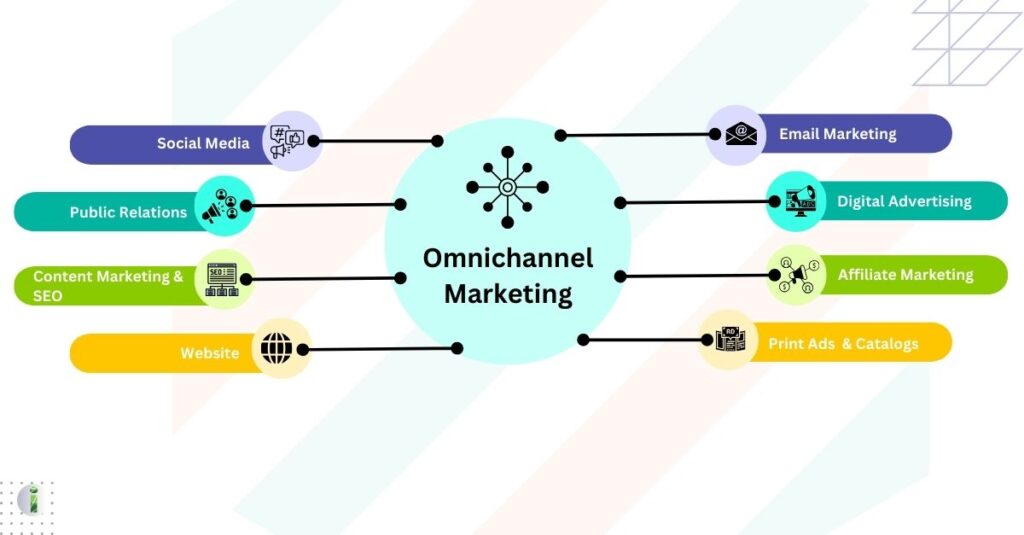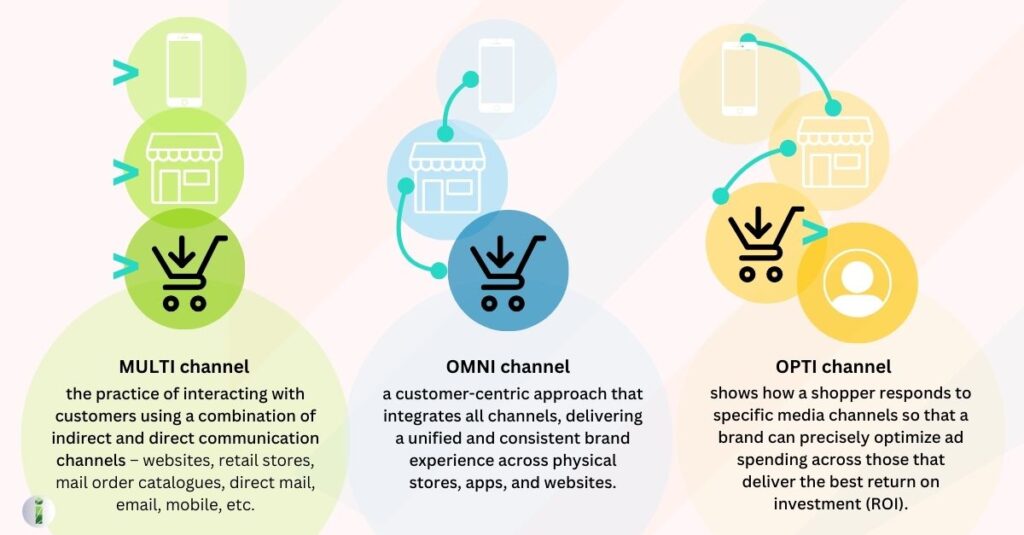In the fast-paced world of digital marketing, “omnichannel” has long been the gold standard for creating a cohesive customer experience. This approach aims to integrate every touchpoint, from physical stores to online platforms, to ensure a seamless journey for customers. However, as marketing practices evolve and resources become more constrained, a new approach is emerging that challenges the omnichannel model: optichannel marketing. This article delves into why focusing on fewer, high-impact channels can be more effective and efficient than trying to be everywhere at once.
Understanding the Omnichannel Approach
Table of Contents
ToggleOmnichannel marketing is designed to provide a unified and consistent experience across all channels. The premise is simple: regardless of how or where a customer interacts with your brand—be it through a website, mobile app, social media, or in-store—they should receive a seamless and integrated experience.
Advantages of Omnichannel:
– Consistency: Ensures a unified brand message and customer experience.
– Customer Convenience: Allows customers to switch between channels smoothly.
– Comprehensive Data Collection: Offers a holistic view of customer interactions.
However, the omnichannel approach is not without its challenges. Implementing and maintaining such a strategy involves significant resources, both financial and human. It requires sophisticated technology to integrate channels and constant oversight to ensure consistency. The result can be a complex and costly operation, particularly for smaller businesses.

The Emergence of Optichannel Marketing
Optichannel marketing represents a shift from the all-encompassing omnichannel approach to a more streamlined, focused strategy. Instead of trying to be present on every possible channel, businesses concentrate on the most effective channels for their specific audience and goals.
Key Benefits of Optichannel Marketing:
1. Enhanced Focus: By narrowing your focus to the channels that yield the best results, you can allocate resources more efficiently. This focus allows for deeper, more tailored engagement with your audience.
2. Cost Efficiency: Reducing the number of channels lowers marketing expenses, making it easier to manage budgets and invest in high-impact areas.
3. Improved Personalization: Concentrating on select channels enables more precise and relevant messaging, enhancing the overall customer experience.
Implementing an Optichannel Strategy
1. Conduct Comprehensive Customer Analysis: Start by gathering data on your audience’s preferences and behaviors. Utilize analytics tools to understand which channels they frequent and how they interact with them. This analysis will guide your channel selection process and help you prioritize efforts.
2. Prioritize Channels with High Impact: Based on your analysis, identify the channels that provide the highest engagement and conversion rates. For instance, if your target audience responds well to email marketing but less so to social media, allocate more resources to email campaigns and refine your social media strategy.
3. Streamline Messaging: Craft a cohesive message tailored to each chosen channel. While your core brand message should remain consistent, adapt the content to fit the nuances of each platform. For example, use visual content and quick updates for social media, and more detailed information for email newsletters.
4. Leverage Data for Continuous Improvement: Monitor the performance of your selected channels and adjust your strategy based on real-time data. A/B testing and analytics will help you refine your approach, ensuring that you stay responsive to changes in customer behavior and market trends.

Case Studies: Success Stories in Optichannel Marketing
Several companies have embraced optichannel marketing with impressive results. Here’s a closer look at how some brands have thrived with this approach:
– Patagonia: Known for its commitment to environmental sustainability, Patagonia has focused its marketing efforts on channels that resonate with its eco-conscious audience. By prioritizing social media and community-driven campaigns, Patagonia effectively engages its audience while staying true to its brand values. This focused approach has helped build a strong, loyal customer base and reinforced its brand identity.
– Lush: The ethical cosmetics brand Lush has successfully implemented an optichannel strategy by concentrating on channels that align with its brand ethos. Lush uses its website, social media, and in-store experiences to connect with customers who value ethical products and transparency. This targeted approach allows Lush to maintain a consistent and engaging brand presence without spreading itself too thin.
– Apple: Apple exemplifies an optichannel approach by focusing on its website, flagship stores, and selective social media channels. This strategy allows Apple to deliver a cohesive and premium brand experience, reinforcing its market position as a leader in innovation and design. By concentrating its efforts on high-impact channels, Apple achieves a high level of customer engagement and brand loyalty.
Challenges and Considerations
While optichannel marketing offers numerous benefits, it’s important to acknowledge potential challenges:
– Channel Selection: Choosing the right channels requires a deep understanding of your audience and their preferences. Incorrectly prioritizing channels can lead to missed opportunities or ineffective campaigns.
– Consistency: Even though the focus is on fewer channels, maintaining a consistent brand message across these platforms is crucial. Ensure that your messaging aligns with your overall brand strategy and resonates with your target audience.
– Adaptability: The digital landscape is dynamic, and customer preferences can shift. Be prepared to adjust your optichannel strategy as needed to stay relevant and responsive.
Conclusion
As marketing strategies continue to evolve, businesses must adapt to new approaches that align with their goals and resources. Optichannel marketing offers a refreshing alternative to the complexity and cost of omnichannel strategies. By focusing on a select few high-impact channels, companies can streamline their efforts, improve customer experiences, and achieve better results.
In essence, embracing the optichannel approach allows businesses to allocate resources more effectively, create more personalized engagements, and ultimately drive greater success. Sometimes, less really is more—especially in the world of marketing.








